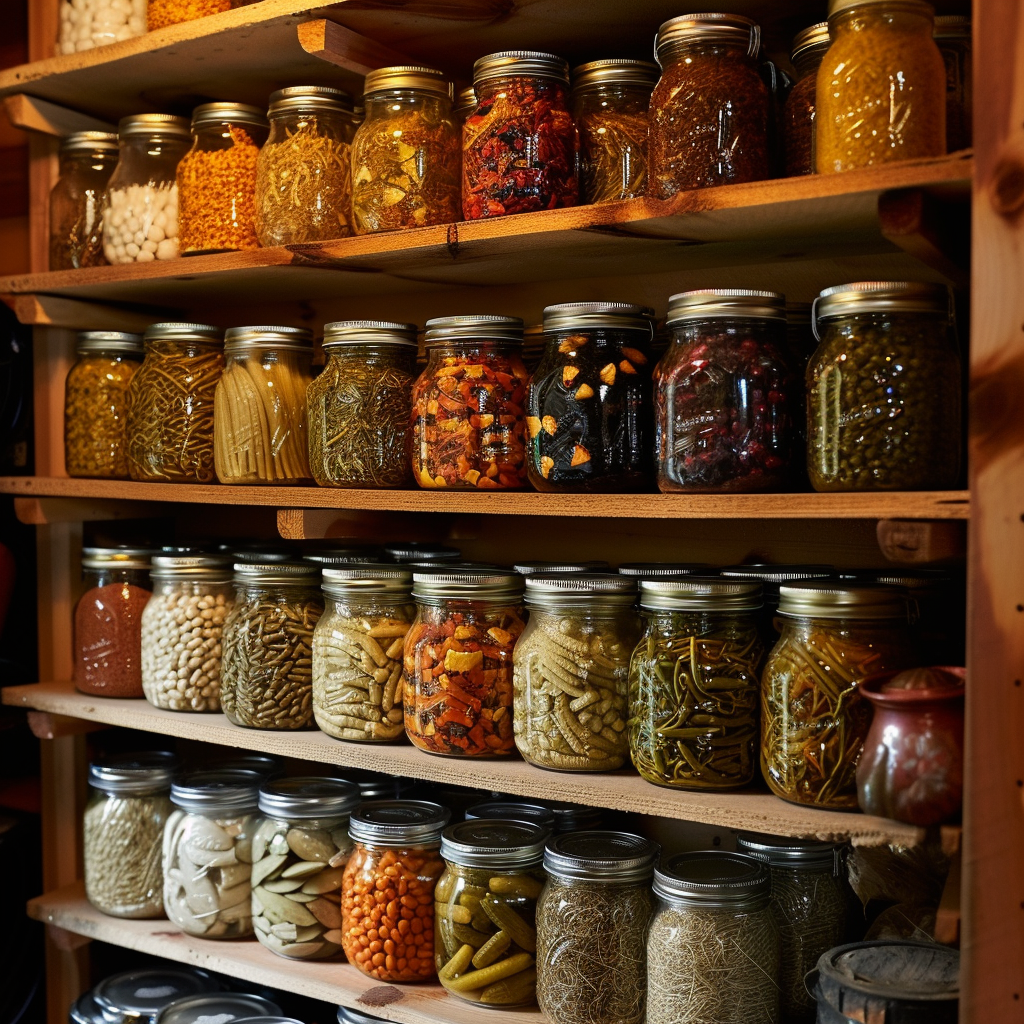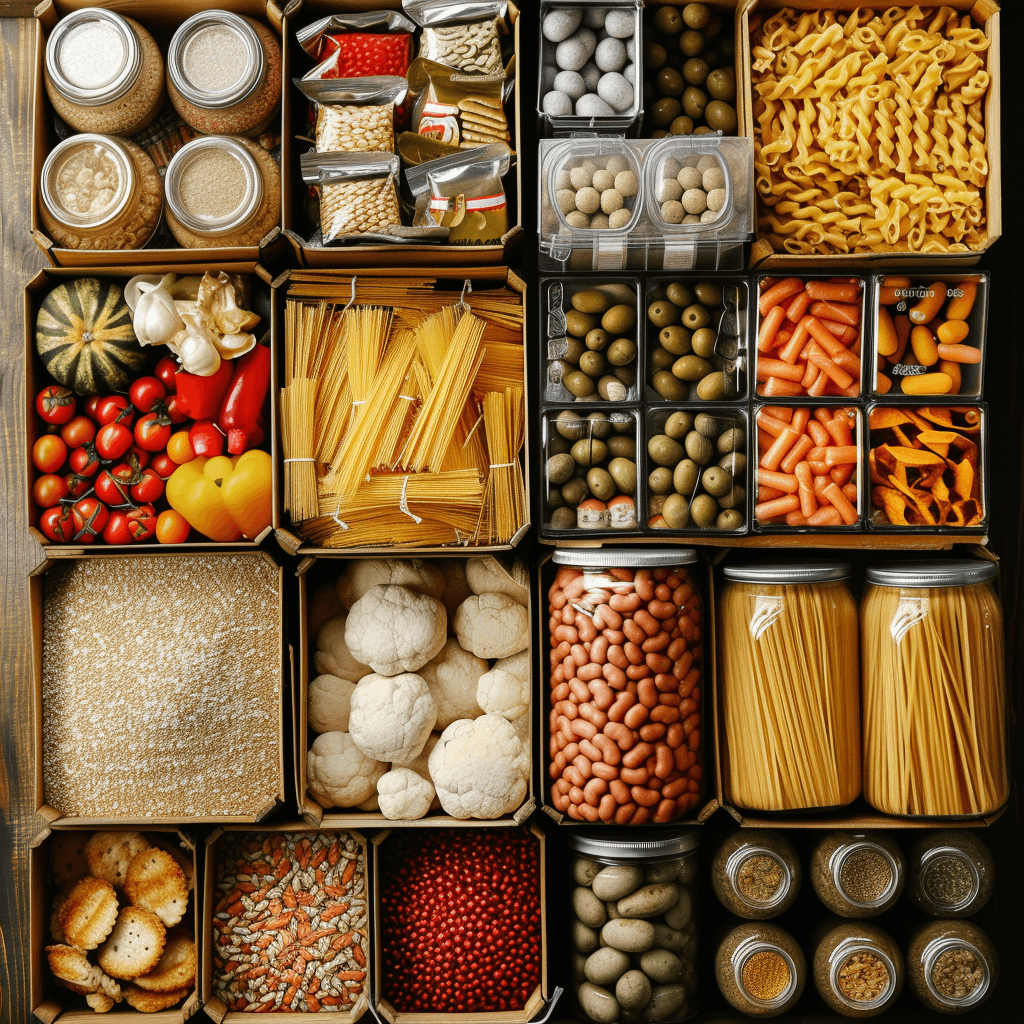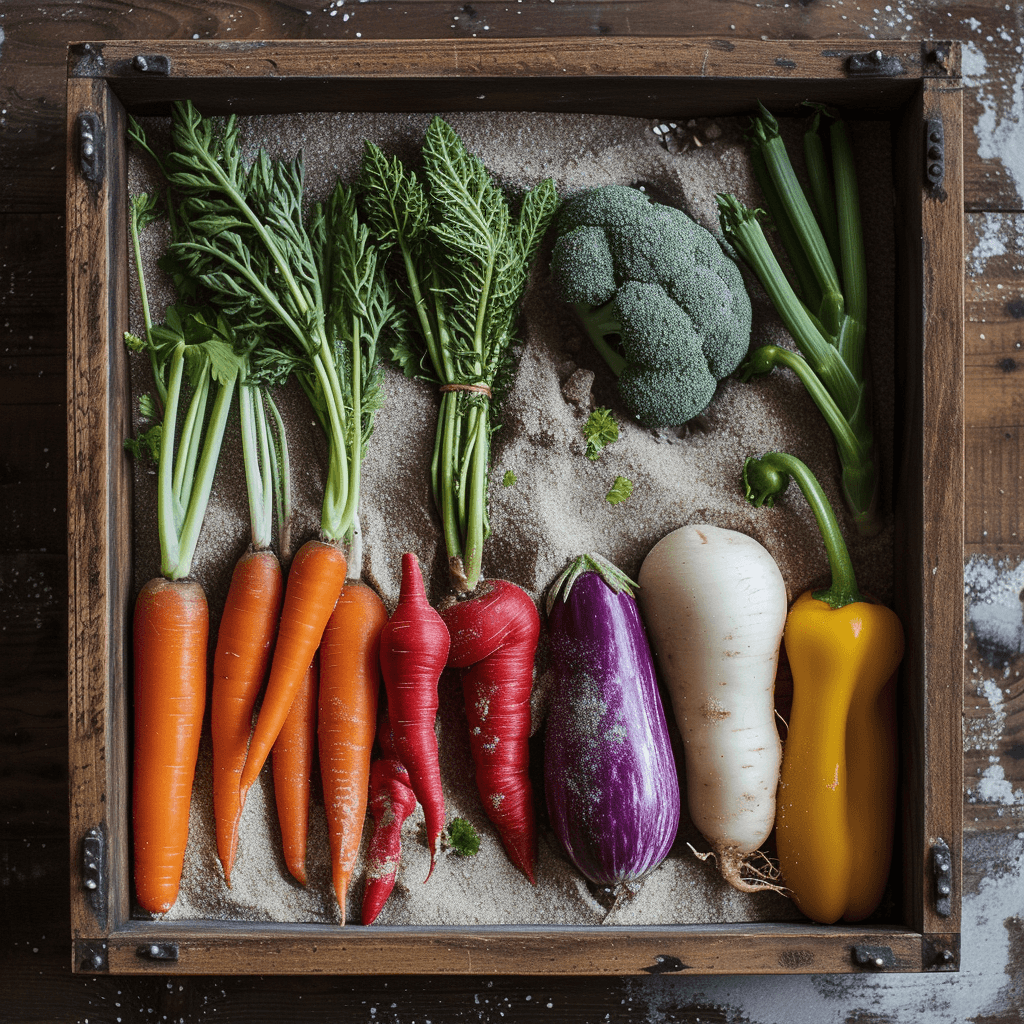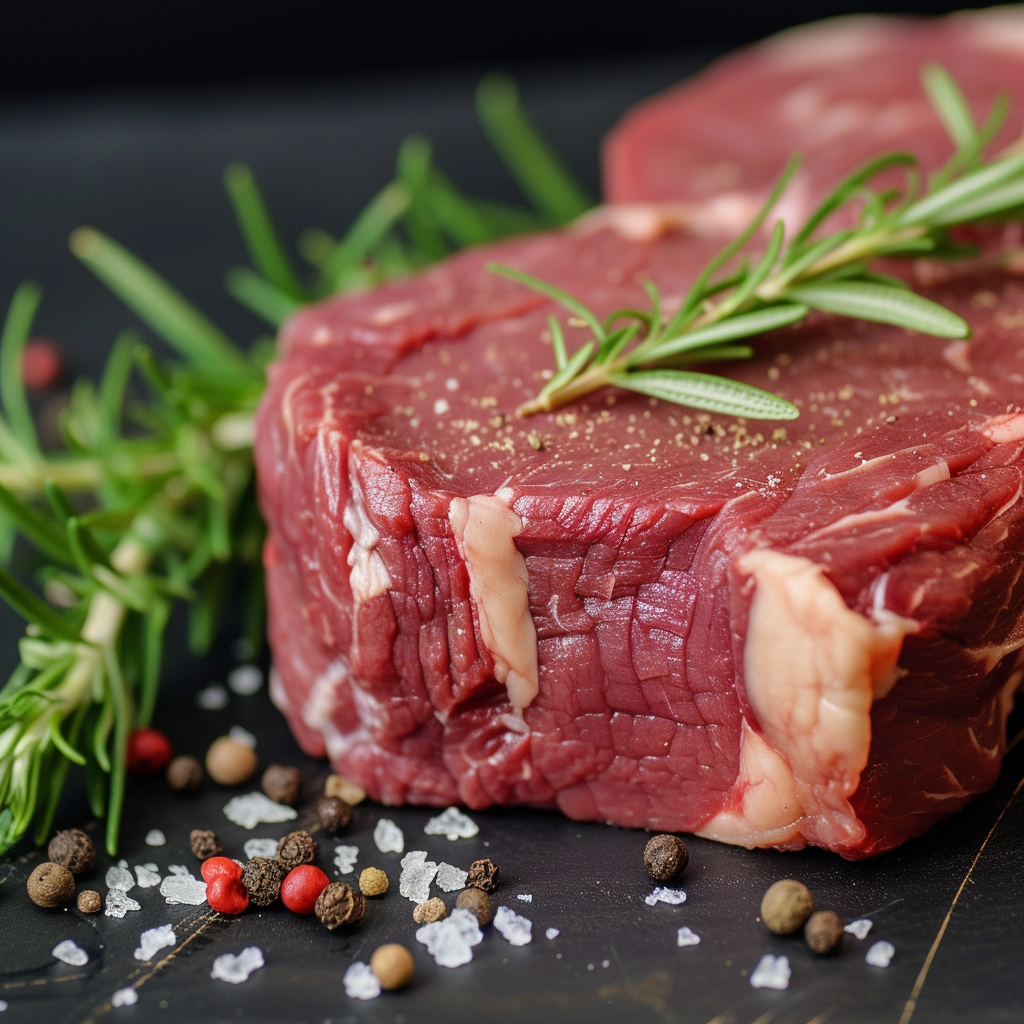So, you’re interested in living off-grid? That’s awesome! There’s something really liberating about being self-sufficient and independent. One important aspect of off-grid living is food storage. After all, you want to make sure you have enough food to sustain yourself without relying on grocery stores or other external sources. But with all the different options out there, it can be overwhelming to figure out which type of food storage is right for you. Don’t worry though, in this article as the title might suggest “Different Types of Food Storage for Off-Grid Living” we’ll break down the four main types of food storage for off-grid living and help you make an informed decision.
When it comes to off-grid food storage, there are four main types: canned food, freeze-dried food, dehydrated food, and root cellars. Canned food is a classic choice as it can last for several years and is relatively low maintenance. Freeze-dried food is another popular option, especially for long-term storage. It’s lightweight, has a long shelf life, and retains most of its nutrients.
Dehydrated food is similar to freeze-dried food, but it usually has a shorter shelf life and requires more preparation before consuming. And finally, root cellars are a traditional method of food storage that involves storing fruits, vegetables, and even meat in a cool, dark, and slightly humid space underground. They’re great for storing fresh produce without the need for preservation methods.
Each type of food storage has its pros and cons, so it’s important to consider factors such as shelf life, nutritional value, storage space, and the level of effort required for preparation. In the following article, we’ll dive deeper into each type, explore their benefits and limitations, and help you decide which option is best suited for your off-grid lifestyle. So, stay tuned and get ready to learn more about the different types of food storage for off-grid living!
Introduction to Off-Grid Living
Living off the grid has become increasingly popular in recent years, as more individuals seek to become self-sufficient and reduce their reliance on traditional energy sources. Off-grid living involves disconnecting from municipal utilities and instead generating your own power, collecting rainwater, and managing waste on your own. While this lifestyle offers numerous benefits, one crucial aspect that off-grid dwellers must consider is food storage. In this article, we will explore the different types of food storage methods that are ideal for off-grid living, ensuring that you have access to nourishing meals even in the most remote locations.
Importance of Food Storage in Off-Grid Living
Maintaining a well-stocked food storage supply is essential for off-grid living for several reasons. Firstly, it ensures that you have access to food even when you are unable to travel to the nearest grocery store due to inclement weather or other challenges. Secondly, having a robust food storage system can help you stay prepared for emergencies, such as natural disasters or power outages. Lastly, food storage allows you to achieve self-sufficiency, reducing your reliance on external food sources and providing a sense of security.
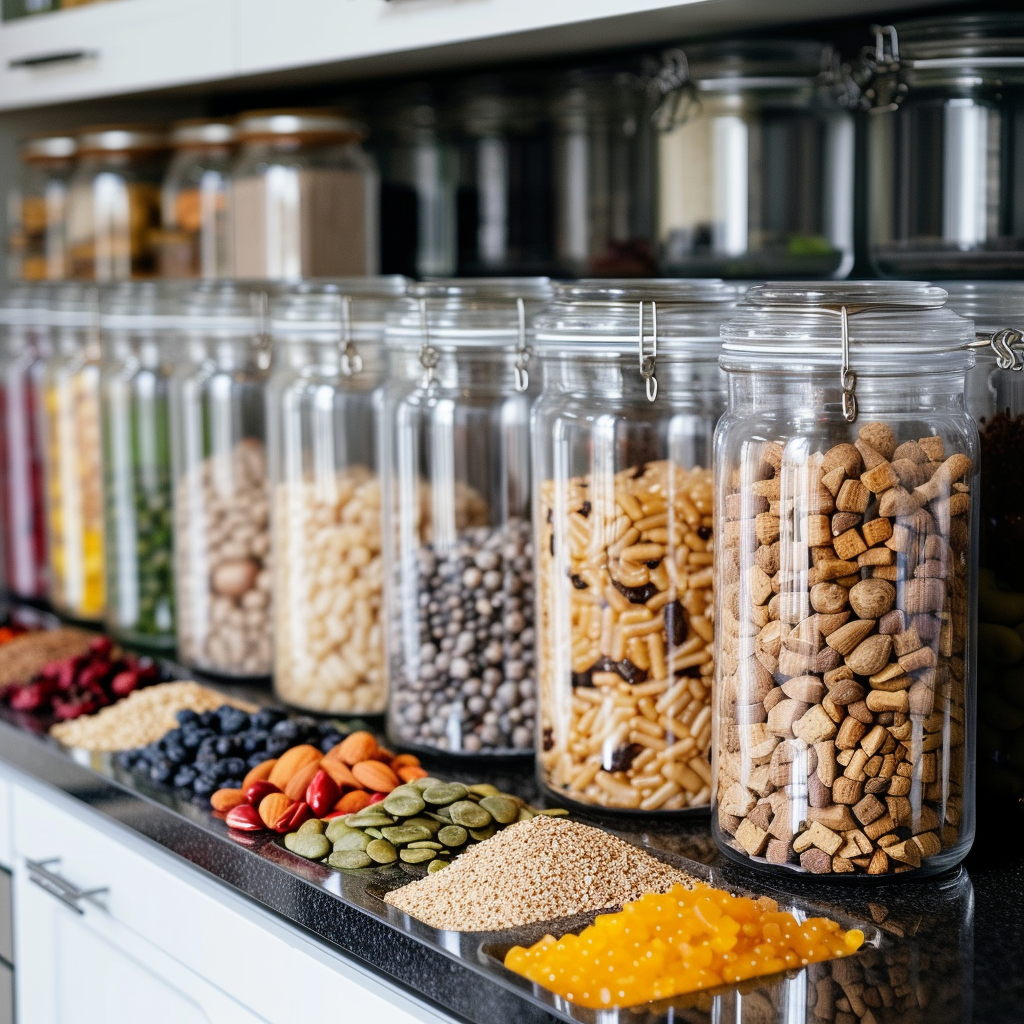
Dry Food Storage
Dry food storage is a popular method for preserving food in off-grid settings. This method involves removing moisture from the food, preventing the growth of bacteria, mold, and yeast that can cause spoilage. Common types of dry food include grains, legumes, pasta, and dehydrated fruits and vegetables. These foods can be stored in airtight containers such as glass jars or food-grade buckets.
The benefits of dry food storage are numerous. Firstly, dry foods have a long shelf life and can typically be stored for several years if properly packaged and stored in a cool, dry place. This makes them an excellent option for off-grid living, where access to fresh produce may be limited. Additionally, dry foods are often lightweight and compact, making them easy to transport and store in small spaces.
Canned Food Storage
Canned food storage is another effective method for off-grid living. Canning involves placing food in airtight jars or cans and heating them to high temperatures to kill bacteria and prevent spoilage. Canned foods can range from fruits and vegetables to meats and soups, providing a wide variety of options for off-grid dwellers.
The advantages of canned food storage are manifold. First and foremost, canned foods have a long shelf life, often lasting for multiple years. This makes them an excellent option for off-grid living, as they can be stored for extended periods without the need for refrigeration. Canned foods also retain their nutritional value well, ensuring that you are consuming wholesome meals even in remote locations.
When it comes to recommended canned food items for off-grid living, it is crucial to choose foods that are nutrient-dense and versatile. Some popular choices include canned beans, tuna, chicken, vegetables, and fruits. These items can serve as the foundation for a variety of dishes and provide essential nutrients for a balanced diet.
Freeze-Dried Food Storage
Freeze-dried food storage is a method that involves removing moisture from food by freezing it and then subjecting it to a low-pressure environment that causes the ice to sublimate, changing directly from a solid to a gas without entering the liquid phase. This process preserves the nutritional value and flavor of the food while significantly reducing its weight and volume.
The benefits of freeze-dried food storage for off-grid living are significant. Firstly, freeze-dried foods have an incredibly long shelf life, with some products lasting up to 25 years or more. This makes them an ideal option for long-term food storage in off-grid settings. Additionally, freeze-dried foods are lightweight and compact, making them easy to transport and store. They also retain their nutritional value exceptionally well, making them a healthy and convenient option for off-grid dwellers.
Some popular freeze-dried food choices for off-grid living include fruits, vegetables, meats, and even complete meals such as stews and casseroles. These options provide a wide range of choices for meals, ensuring that you can enjoy a varied and balanced diet even in remote locations.
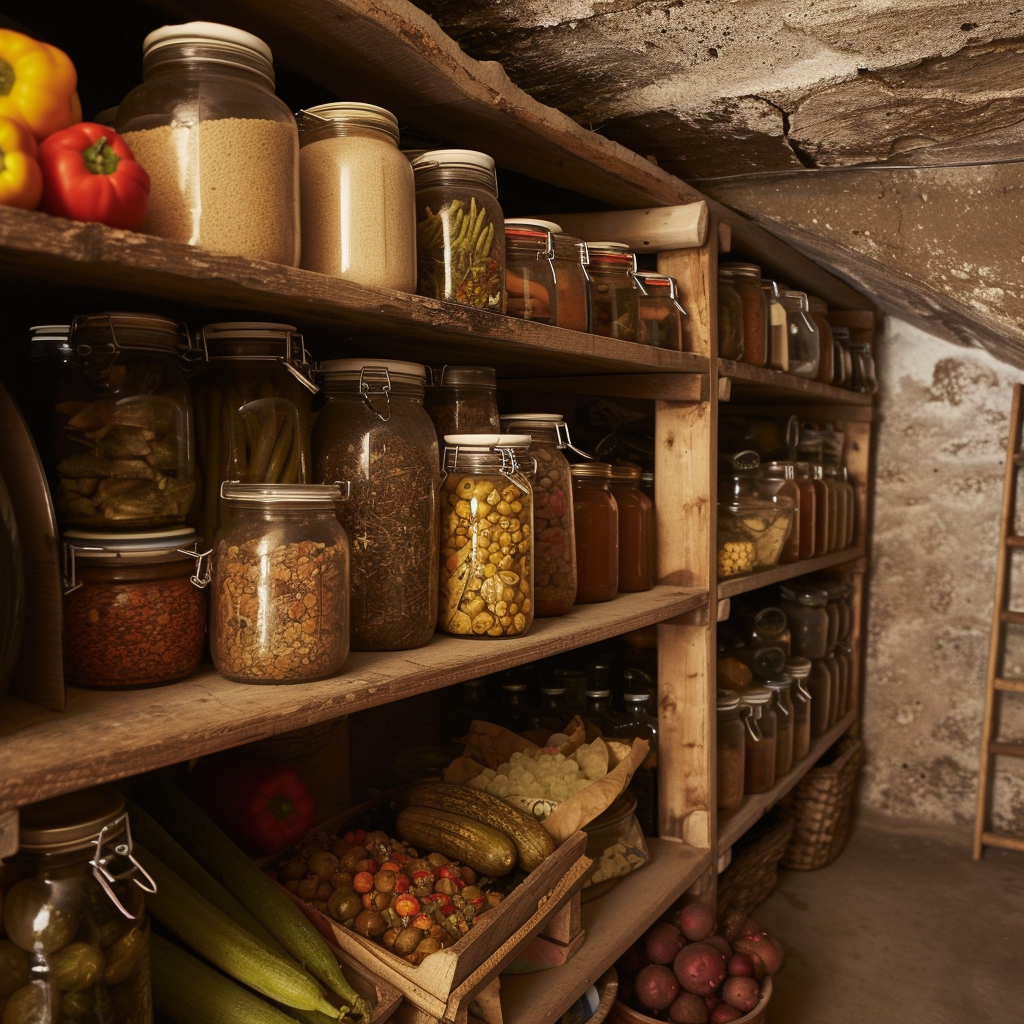
Root Cellar Food Storage
Root cellar food storage is a traditional and effective method that utilizes the natural coolness and humidity of the earth to preserve food. A root cellar is an underground structure or storage space that provides the ideal conditions for storing root vegetables, fruits, and other perishable food items.
The advantages of root cellar food storage for off-grid living are numerous. Firstly, root cellars provide a stable temperature and humidity level that helps extend the shelf life of fresh produce. This can be especially beneficial in off-grid settings where access to fresh fruits and vegetables may be limited. Additionally, root cellars are a low-cost and environmentally-friendly food storage option, as they do not require electricity to operate and make use of natural resources.
When it comes to ideal food items for root cellar storage, root vegetables such as potatoes, carrots, and onions are excellent choices. Fruits such as apples and pears can also be stored in root cellars, as long as they are kept in a dark and cool environment. These food items can last for several months in a root cellar, allowing you to enjoy fresh produce even in the depths of winter.
Refrigeration and Cold Storage
While off-grid living often involves disconnecting from traditional electricity sources, some individuals may choose to incorporate refrigeration and cold storage methods into their lifestyle. This can be achieved through the use of solar-powered refrigerators, propane-powered refrigeration systems, or other alternative energy sources.
Refrigeration provides several benefits for off-grid living. Firstly, it allows you to store perishable food items such as dairy products, meat, and fresh produce at safe temperatures, reducing the risk of foodborne illnesses. This can be particularly crucial in off-grid settings where access to medical facilities may be limited. Additionally, refrigeration allows for a wider variety of meals and food options, enhancing the overall quality of your off-grid living experience.
When it comes to choosing foods suitable for refrigeration, it is important to select items that have a relatively short shelf life and require refrigeration to maintain their freshness. Some examples include milk, cheese, eggs, butter, and fresh fruits and vegetables. These items can be stored in a solar-powered or propane refrigerator, ensuring that they remain safe for consumption for an extended period.
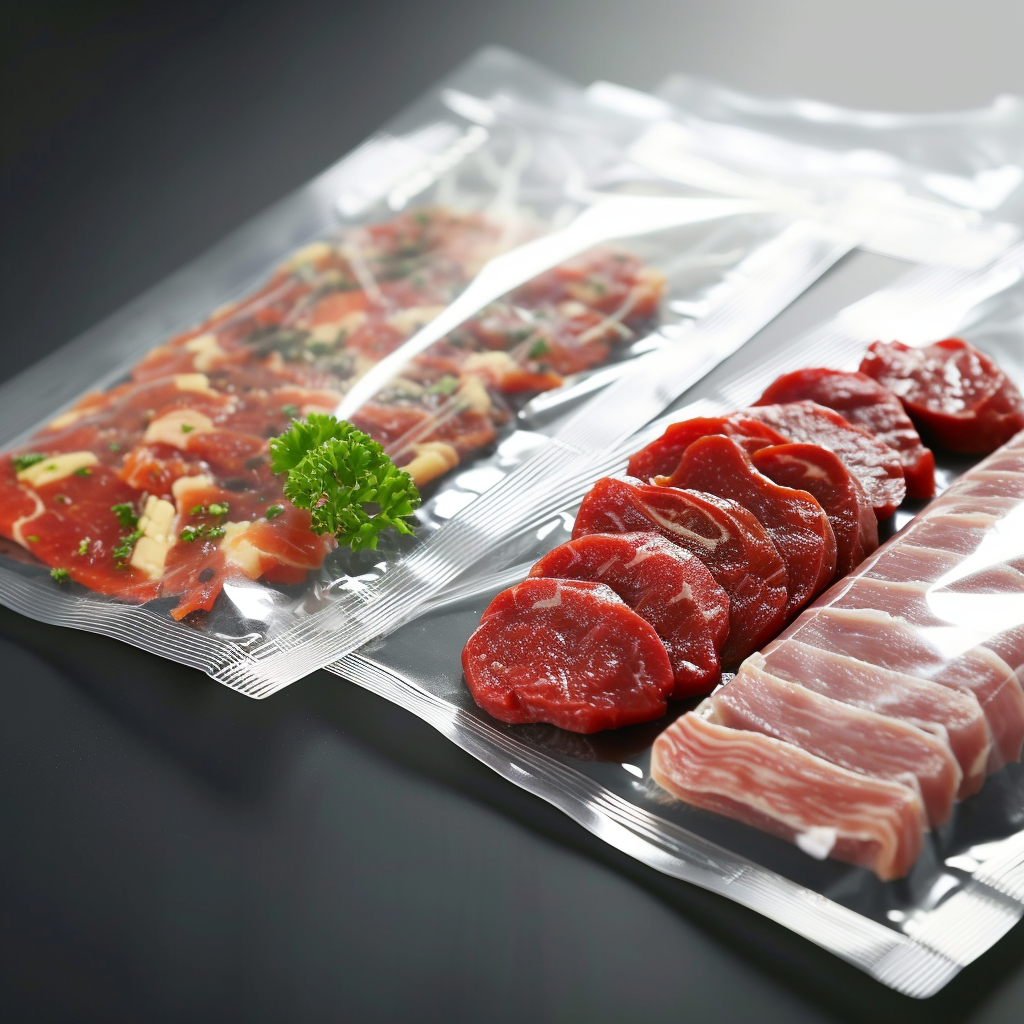
Vacuum Sealing and Mylar Bags
Vacuum sealing is a popular method for preserving food that involves removing air from a bag or container and sealing it tightly. This process helps prevent the growth of bacteria and slows down the oxidation process that can cause food to spoil. Mylar bags, which are made from a durable plastic material, are commonly used for vacuum sealing and long-term food storage.
The advantages of vacuum sealing for off-grid living are significant. Firstly, vacuum sealing extends the shelf life of food by significantly reducing air and moisture contact. This allows you to store a variety of food items for an extended period without compromising their quality or nutritional value. Additionally, vacuum-sealed packages are lightweight and compact, making them easy to transport and store in off-grid settings.
Mylar bags, when used in conjunction with vacuum sealing, provide an extra layer of protection against moisture, light, and oxygen. This ensures that the food remains fresh and preserves its original flavors for an extended period. Mylar bags are particularly suitable for long-term food storage, as they offer durability and resistance to punctures and tears.
Bottled Food Storage
Bottled food storage involves storing food in glass bottles, which provide an airtight seal and protect the contents from moisture and pests. This method is especially suitable for preserving liquids such as homemade sauces, jams, and pickled vegetables.
The benefits of bottled food storage for off-grid living are numerous. Firstly, glass bottles are inert and do not leach harmful chemicals into the food, ensuring that you consume safe and healthy meals. Additionally, glass bottles are reusable and environmentally friendly, reducing waste in off-grid settings. Bottled food items can also add diversity and flavor to your off-grid meals, as homemade sauces and pickled vegetables can enhance the taste of simple dishes.
When it comes to choosing foods suitable for bottled storage, options such as homemade tomato sauce, fruit preserves, and pickled vegetables are excellent choices. These items can be prepared in large batches and stored in glass bottles, ensuring that you have a supply of flavorful condiments and preserves throughout the year.
Conclusion
In conclusion, selecting the right food storage methods is crucial for successful off-grid living. By ensuring food availability, maintaining emergency preparedness, and achieving self-sufficiency, you can enjoy a fulfilling and sustainable off-grid lifestyle. Whether you opt for dry food storage, canned food storage, freeze-dried food storage, root cellar food storage, refrigeration, vacuum sealing and Mylar bags, or bottled food storage, each method offers unique advantages that cater to different food preservation needs. By carefully considering the suitability of each method for your off-grid living situation, you can ensure that your food remains secure, sustaining, and delicious.

